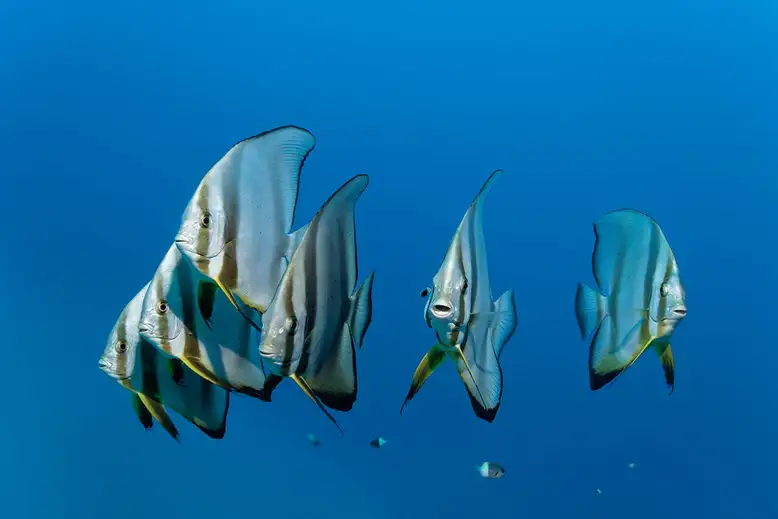At first thought, the ocean might seem like a quiet place. But if you listen carefully, you might hear the sounds of a fish choir.
Much of this underwater music comes from soloist fish, repeating the same calls over and over. But when the calls of various fish overlap, they form a beautiful chorus.
Robert McCauley and colleagues at Curtin University in Perth, Australia, recorded vocal fish in the coastal waters off Port Hedland in Western Australia over 18 months, and recognized seven distinct fish choruses, happening at dawn and dusk. You can listen to three of them here:
The grunting call that researcher Miles Parsons compares to the “buzzer in the Operation board game” comes from a species of Terapontid, while the low “foghorn” call is made by the black-spotted croaker (Protonibea diacanthus). The third chorus is a quieter batfish that creates a “ba-ba-ba” call.
RELATED STORY:
McCauley, who led the research, says:
“I’ve been listening to fish squawks, burble and pops for nearly 30 years now, and they still amaze me with their variety.”
RELATED STORY:
Sound plays a vital role in various fish behaviors such as reproduction, feeding, and territorial disputes. Nocturnal predatory fish use calls to stay together to hunt, while fish that are active during the day use sound to defend their territory. Marine biologist Steve Simpson at the University of Exeter, UK says:
“You get the dusk and dawn choruses like you would with the birds in the forest.”
The recordings were captured by two sea-noise loggers: the first positioned near the Port Hedland shore and the second 21.5 kilometres away in offshore waters. Simpson added:
“This is a method that allows us to understand what’s happening at Port Hedland 24/7 for a year and a half. I don’t know any scuba diver that can stay down there that long!”
RELATED STORY:
Listening to choruses over a long period of time allows scientists to observe fish and their ecosystems, particularly in low visibility waters, such as those off Port Hedland. McCauley says:
“We are only just beginning to appreciate the complexity involved and still have only a crude idea of what is going on in the undersea acoustic environment.”












